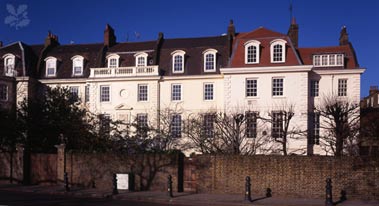 Bay Sixty 6 Skatepark
Bay Sixty 6 Skatepark Bramley's Big Adventure
Bramley's Big Adventure Carlyle's House
Carlyle's House Chelsea Physic Garden
Chelsea Physic Garden Diana Memorial Playground
Diana Memorial Playground Gambado Chelsea
Gambado Chelsea Kensington Palace
Kensington Palace Leighton House Museum
Leighton House Museum Lindsey House
Lindsey House Linley Sambourne House
Linley Sambourne House Museum of Instruments
Museum of Instruments National Army Museum
National Army Museum Natural History Museum
Natural History Museum Royal Hospital Chelsea
Royal Hospital Chelsea Serpentine Gallery
Serpentine Gallery Tate Britain
Tate Britain The Polish Institute and Sikorski Museum
The Polish Institute and Sikorski Museum The Saatchi Gallery
The Saatchi Gallery The Science Museum
The Science Museum The Victoria and Albert Museum
The Victoria and Albert Museum V&A Theatre Collections/National Museum of the Performing
V&A Theatre Collections/National Museum of the Performing  Westway Climbing Centre
Westway Climbing Centre 
Elegant 17th-century town house. Built on the former site of Sir Thomas More's garden and now part of Cheyne Walk, the house claims one of the finest 17th-century exteriors in London.
History of Lindsey House
The house was built in 1674 by the third Earl of Lindsey on the riverside site of Thomas More's garden and is thought to be the oldest house in Kensington and Chelsea. It was extensively remodelled in 1750 by Count Zinzendorf for the Moravian community in London.
The house was divided into four separate dwellings in 1775. Today, it occupies nos. 96 to 101 of Cheyne Walk, covering a number of separate frontages and outbuildings. Previous residents have included the historical painter John Martin, in one of the outbuildings at 4 Lindsey Row from 1849–53 and James McNeill Whistler between 1866–78 at 2 Lindsey Row (now 96 Cheyne Walk). In 1808, engineer Marc Brunel lived in the middle section of the house (now no. 98), and his son Isambard Kingdom Brunel grew up here. These residencies are commemorated by Blue plaques on the walls of the house.[1]
The house was separated from the river by the construction of the Chelsea Embankment, completed in 1874, as a part of Joseph Bazalgette's grand scheme to create a modern sewage system.
One part of the house features a garden designed by Edwin Lutyens and Gertrude Jekyll in 1911. This is a small garden of 50 feet (15.2 m) by 30 feet (9.1 m), laid to grass, two broad paths with two narrow paths on the boundary run the length of the garden around an ancient mulberry tree and lily pond. This area is surrounded by statuary, a colonnade and a single flower border. The garden is said by Lennox-Boyd be "modest in its elements, quietly restful in its effect" and "to respect the simple formality of the house". In 2000, the garden was restored and a glazed garden room was added to the house by Marcus Beale Architects.
The National Trust house is open to the public during London Open House weekend and is Grade II* listed.
This house should not be confused with the eponymous 1640 house in Lincoln's Inn Fields. That house came to be known as Lindsey House for its occupation in the 18th century by later Earls of Lindsey.
No Comments Yet - Why not be the first to leave a comment
Every effort is made to make sure that all the information is correct but we strongly recommend that you call Lindsey House before you set off on your day out to confirm opening times and admission prices.
Please also note that the position on Google maps for Lindsey House is a rough estimate using their postcode in the database and might be slightly out.
It may also be worth clicking the web link for Lindsey House to see if there are any special events coming up or currently on.